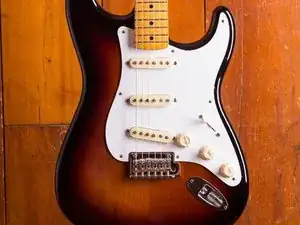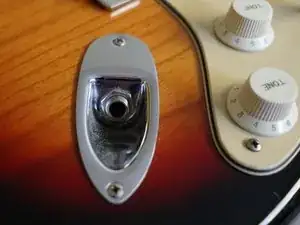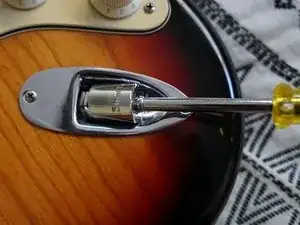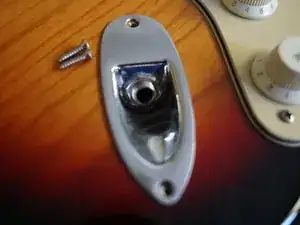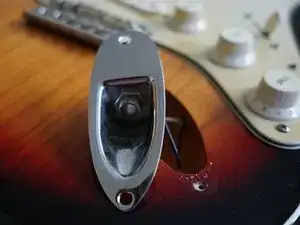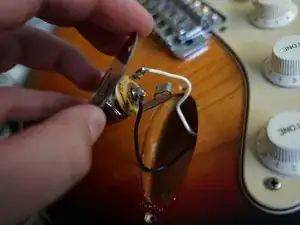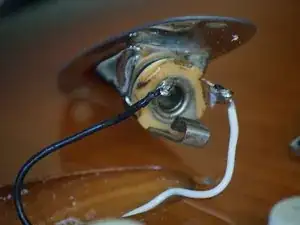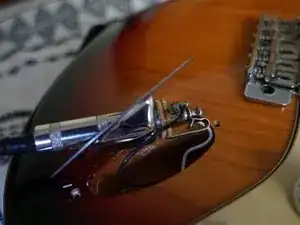Einleitung
Despite being a classic design that's almost 70 years old, the Fender Stratocaster still doesn't quite have all the kinks worked out. Have you ever had your sweet solo cutoff by a series of loud pops and annoying buzzes? The most likely culprit is the wiring, namely the output jack. Today we're going to run through some steps you can take to make sure your rockin' tones aren't affected by this feedback issue.
Werkzeuge
-
-
Gather your tools, all we'll need for this is the guitar and an appropriately sized socket driver. Later on we may need a phillips head screwdriver so it would be good to have one just in case.
-
-
-
For beginners, this is where you plug your guitar cable in from your amplifier
-
Inspect the threaded hex bolt, called a jam nut, within the socket. If it's loose, it will need to be tightened. A poorly fitted cable is the most common cause of any feedback you may experience when playing.
-
Another way to test the tightness of the jam nut is to insert your cable into the the jack and see if it's loose. Any movement while the cable is inserted can cause amp feedback.
-
-
-
Insert hex driver around the jam nut. Be wary of scratching the surrounding output jack, it can be a tight fit.
-
Give the jam nut a few turns until it starts to tighten.
-
Be sure to not overtighten it, doing so has the potential to sever the connection wires underneath.
-
When you've tightened the jam nut, test your guitar by inserting the cable and turning on the amp. If the feedback remains, continue this tutorial for more troubleshooting. If it's fixed, play your favorite tune!
-
-
-
If the feedback issue remains, we'll need to open the output jack. Start by removing the two phillips head screws located on top and bottom of the plate.
-
Carefully lift the jack from the body of the guitar. Don't pull too hard, some guitars don't have very long wire leads at this connection.
-
-
-
Inspect the two soldered wires and the jack connection point. The connections should be strong and free of any corrosion.
-
-
-
Before screwing the plate back down, it's a good idea to check the jack's contact.
-
Take a guitar amp cord that IS NOT plugged in to an amp and insert it into the jack area. Make sure the contact is touching the end of the cord's tip as pictured.
-
If everything looks good, screw the plate back down and test the guitar. If the issue persists, a replacement jack may be needed.
-
To reassemble your device, follow these instructions in reverse order.
